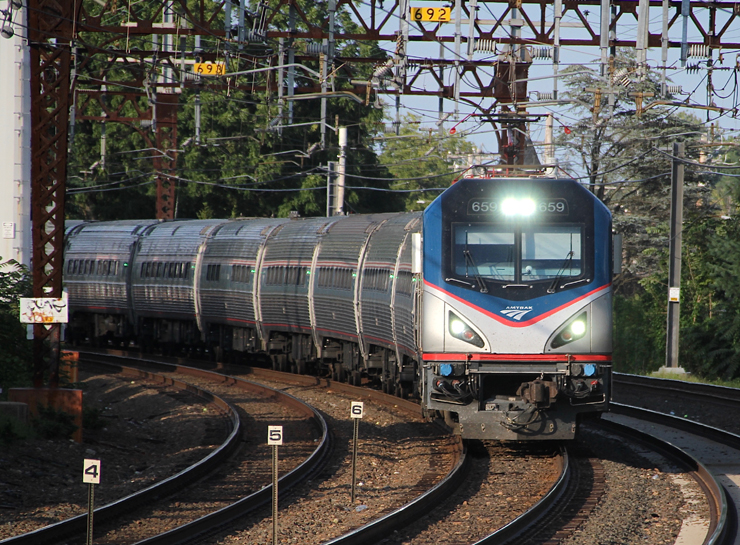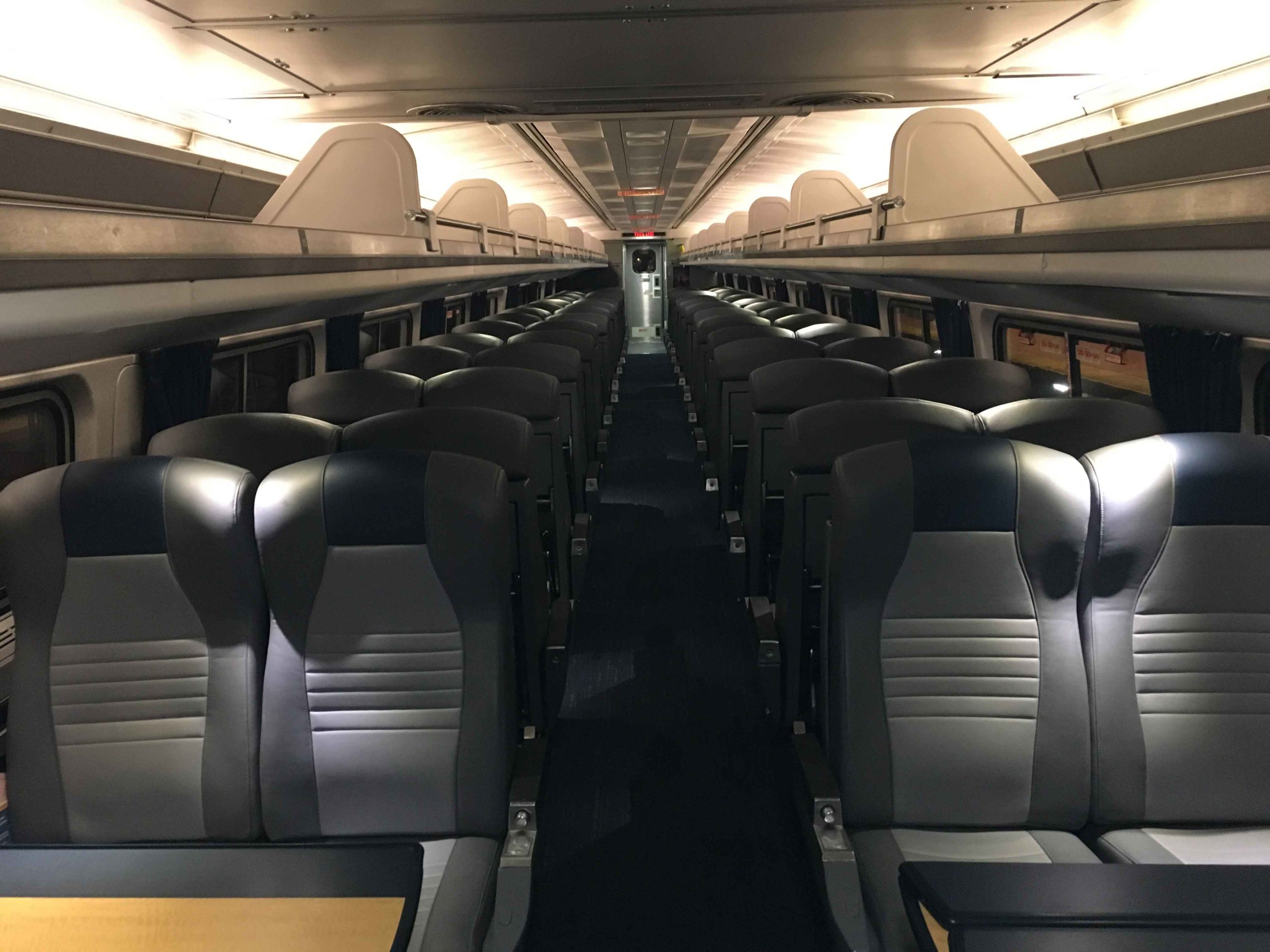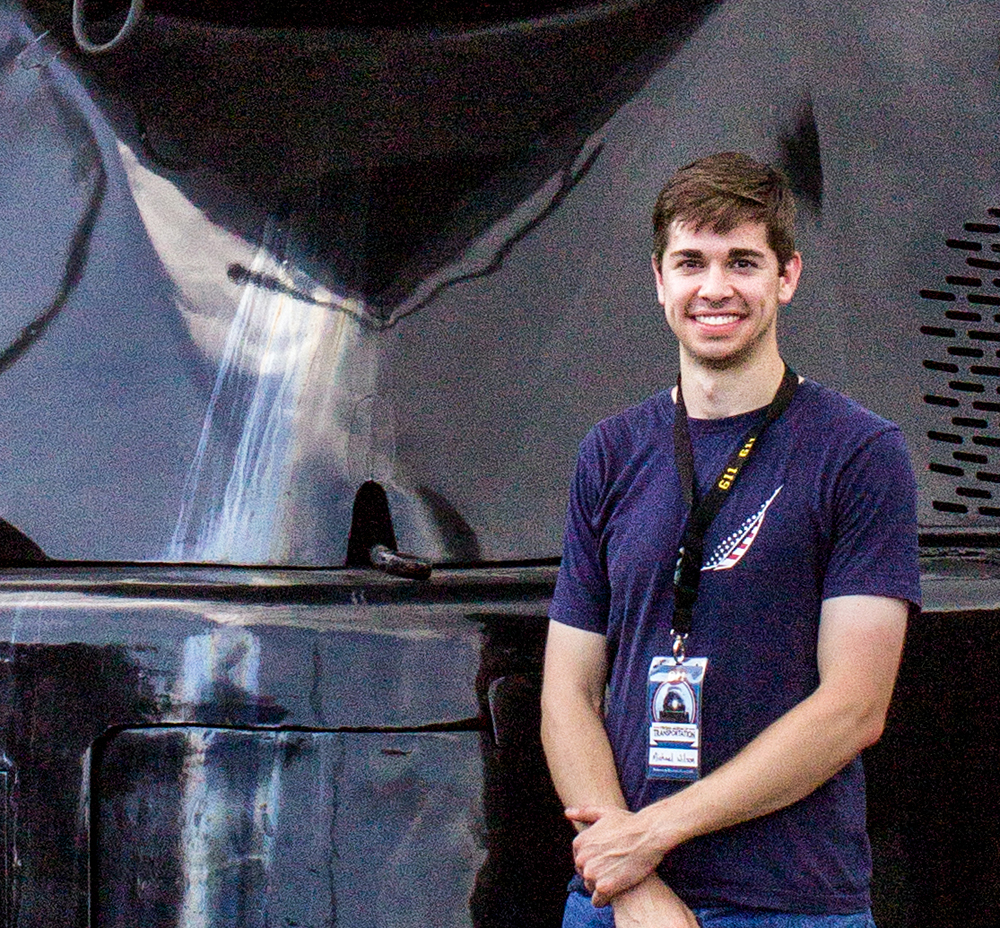
Amtrak Amfleet cars were the first of the National Passenger Railroad Corporation’s own passenger cars in the 1970s. They were and are, useful, flexible cars that have served the railroad for decades.
Did you know these facts about Amfleet cars?
- The cars were initially billed as “the Amfleet,” but “the” was quickly dropped as trains were “Amfleeted” and the cars became just “Amfleet.”
- Amfleet marked the end of the shift from 2-across parlor car configuration (which survived through individual swivel seats in Metroliners) to 2-by-1 “club” car seating.
- All in-service Amfleet cars are now trainline-equipped so they can be operated with cab control cars or locomotives at both ends of the consist.
- The 492 Amfleet 1 coaches were the largest-ever order of intercity passenger cars from a single builder in the United States.
- Amfleet car capacity has shrunk over time. Most coaches were originally delivered with 84 seats, but lavatory size expansion and other ADA seating changes have lowered regular coach capacity to 72 – a 14% capacity reduction.
- There has never been an Amfleet combine or baggage car.
- Amfleet seats are several inches higher than the original Metroliner seats, making it easier for kids to see out of the windows.
- By design, Amfleet seats need to be turned in order from one end of the car to the other – seats cannot not be randomly turned to provide “facing fours” when desired.
How Amfleet set standards
Amfleet didn’t pioneer brand-new technology (arguably one reason for its success), but the technologies and configurations it adopted became standards in future Amtrak car orders:
- 480-volt head-end power (in place of steam heat and axle-driven generators)
- Retention toilets
- Segmented (multi-piece) windows
- Push-button doors (including foot-activated “kick pads”)
- Outside brake condition lights
Other innovations were directly traceable to airplanes:
- Individual adjustable reading lights
- Seat-back tray tables and pockets
- High seat backs and indirect lighting
- Seat back pockets
- Tracked seating, allowing for easy interior reconfiguration
Not all airplane features were successful. Amfleet cars were delivered with center armrests between coach seats. These proved unpopular and were removed early in the cars’ life.

How fast was Amfleet built?
A comparison of order to first delivery times for initial orders of each type of car for Amtrak service:
- Amfleet 1; 20 months
- Superliner I; 42 months
- Horizon; 11 months | (Produced as an add-on to an already in-production order of similar cars for New Jersey Transit)
- Viewliner I; 35 months
- California cars; 36 months
- Next-Gen Bilevel Never delivered
- Venture; 32 months
Amfleet, when built…
- Food service cars were equipped with telephone booth, although telephones were not initially installed (and never installed in some cars).
- Cars had designated men’s and women’s restrooms (later converted to unisex).
- Food service cars were equipped with an 8-track tape deck to play music throughout the train
- Amfleet exterior car doors were programmed to close automatically at 2 mph.
- Amfleet end-of-car diaphragms were incompatible with conventional cars.
- Handicapped passengers were encouraged to sit in food service cars, because bathrooms in those cars were equipped with handrails.
John Friedmann writes about Amfleet cars in the January 2023 issue of Trains.














If you’ve ever wondered what an Amfleet baggage car might look like, watch the 1983 movie comedy “Trading Places”. Set crews mocked up a couple of Amfleet coaches in New York to look like a baggage car and a British style compartment coach. I was a Car Inspector for Amtrak at the time stationed in Sunnyside Yard and my coworker and I removed the seats out of these coaches so the film set people could convert them for the movie.
The seats rotate to turn them. They can’t be turned except from one end to another because the seats are too close together to clear. Reading’s MU cars with Deluxe individual seats (bucket seats) were the same way.
The reduction in Amcoach I capacity from 84 to 72 parallels PRR’s conversion of P70R and P70faR cars to P70fbR cars in the 1948-1952 period: 80 walkover seats to 72 walkover seats and larger washrooms, floor baggage space and larger electric compartments. Of course, the P70fbR’s were for NEC service, same as the Amfleet.
My first job at Amtrak was ‘dealer prep’ on the then new Amfleet cars.
They also were built with the middle of the car higher than the ends – like a “bow” shape, so that when they were fully loaded with passengers, they would be flat from end to end.
I’ll toss in one more.
They were all originally delivered with disc brakes only. But, the tendency of wheels to develop a “false flange” causing a rough ride at speed led to the addition of tread braking to help keep the wheels true.